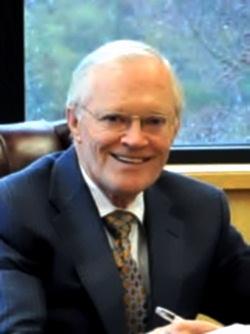Where Did the Universe Come From?
The late Carl Sagan, renowned astronomer and cosmologist, famously began his acclaimed book Cosmos with a sweeping statement: “The Cosmos is all that is or ever was or ever will be.” And the grandeur we see as we point our telescopes outward can cause us to feel humbled by such lofty declarations.
Thanks to advances in astronomy and pictures from the space-based Hubble Telescope, a family today can venture out on a dark night, away from city lights, and parents can explain to wide-eyed children the vast realms that lie beyond the innumerable stars they see above—not just stars, but billions upon billions of galaxies, nebulae, quasars, pulsars and other fascinating phenomena—an uncountable collection of worlds in a seemingly infinite variety scattered throughout a universe of vast, unimaginable size!
Awed by such immense beauty, a curious child might naturally turn to his or her parents and ask a simple question: “Where did the universe come from in the first place?”
Where, indeed? In this case, a child’s question is a scientist’s dilemma. As New Scientist magazine suggested in its January 13, 2012 issue, one could call it “The Genesis problem”—“Without an escape clause, physicists and philosophers must finally answer a problem that has been nagging at them for the best part of 50 years: how do you get a universe, complete with the laws of physics, out of nothing?”
An Expanding Universe?
Human beings have been able to gaze upon the edges of the cosmos, and have explored the hidden laws that work in this marvelous, orderly universe, but not even the most skilled scientist has been able to demonstrate where the universe came from, why it is here, or why it is the way it is.
For some time, such questions were considered the realm of philosophers and theologians. For scientists, the universe could simply be taken for granted, and many assumed it was eternal. But all of that changed in the 1920s, when Belgian astrophysicist Edward Lemaître made a startling discovery.
Working with the Einstein Field Equations—mathematics that the Nobel Prize-winning physicist Albert Einstein derived from his famous General Theory of Relativity—Lemaître concluded that if Einstein’s characterizations of space, time and matter were correct, the universe was not eternally balanced and static. Rather, it had to be expanding over time! Even more startling, the equations showed that the universe had been smaller in the past, and that—if one looked far enough into the past—the universe was an infinitely hot, infinitely dense, infinitely small point, which Lemaître called a “primeval atom.” Understood in this way, Einstein’s equations showed that the vast universe and everything in it, each of the billions upon billions of planets, stars, and galaxies—and even space, itself—had a beginning as an infinitesimal point, smaller than the smallest subatomic particle.
At first, Lemaître’s conclusions were widely dismissed. Famed astronomer Fred Hoyle mocked the idea of a universe expanding from a microscopic beginning, derisively calling it a “big bang.” Even Einstein, himself, reportedly told Lemaître, “Your math is good, but your physics is terrible.” The idea of a non-eternal universe, somehow “brought into existence,” was for some scientists an uncomfortable echo of the opening words of the Bible, “In the beginning God created the heavens and the earth” (Genesis 1:1).
That a dusty, ancient tome—widely dismissed as unreliable and unworthy of consideration by science—should have such a head start on modern cosmology was, to say the least, unnerving to “sophisticated” scientists.
Yet, within a decade, hard data and scientific observation had confirmed Lemaître’s conclusions. Astronomer Edwin Hubble discovered that light waves reaching planet Earth from distant galaxies were shifted in a particular manner consistent with Lemaître’s theory. Just as the sound waves of a train’s whistle shift from a high pitch to a lower pitch as the train passes an observer along the tracks, the “red shift” of light waves from distant galaxies indicated that those galaxies were moving away from us in an expanding universe.
By the 1960s, physicists Arno Penzias and Robert Wilson had detected a faint uniform radiation in the universe that fit perfectly with Lemaître’s theory of a cosmos that began a finite number of years ago as an infinitely small “seed” before expanding into today’s universe. Penzias and Wilson had discovered, in effect, an “echo” of what Hoyle had disdainfully called the “big bang”—the moment of the universe’s creation.
Shocking Implications
Today, the “Big Bang” is taken for granted as one of the most well-established scientific theories. What once was shocking to scientists is now well accepted—our universe has not always been here, and there was a moment of “creation” when it all—literally all—somehow came into existence.
Yet the implications of this well-documented theory—the “Genesis problem”—have not left physicists feeling any easier. As New Scientist noted, “The big bang is now part of the furniture of modern cosmology, but Hoyle’s unease has not gone away. Many physicists have been fighting a rearguard action against it for decades, largely because of its theological overtones. If you have an instant of creation, don’t you need a creator?” (January 13, 2012).
That “rearguard action” continues today. Many theories have been presented trying to avoid a “creation moment”—ranging from multiple universes to a cosmos that expands and shrinks in endless loops to “cosmic eggs” that give birth to “child” universes—but no other theory fits the facts like a universe that began at a moment in time. In their April 2012 paper “Did the universe have a beginning?” Tufts University physicists Audrey Mithani and Alexander Vilenkin evaluate three theories that promise to explain how the universe could “avoid a beginning.” Their conclusion? None allows for a universe that “can actually be eternal in the past.”
The facts are still as Dr. Vilenkin reported them to his audience at a “State of the Universe” symposium held in honor of physicist Stephen Hawking’s 70th birthday: “All the evidence we have says that the universe had a beginning.”
For physicists who hope to avoid a “creation event,” the problem is not going away. But the “Genesis problem” is not a problem at all for those who actually believe the book of Genesis! In the very first sentence of the Bible, God claims the title of Creator of the heavens and the earth! Even the expansion of the universe finds an echo in the words of Scripture in its description of a God who “stretches the heavens like a curtain” (Isaiah 40:22; Psalm 104:2).
Beyond the reach of the astronomer’s telescopes and the physicist’s equations, Scripture reveals the eternal and supernatural Creator of all things! As the Psalmist sang to God, “Your heavens [are] the work of Your fingers, the moon and the stars, which You have ordained” (Psalm 8:3).
When the child—or the physicist—asks the question, “Where did the universe come from?” we can answer with confidence: The universe came from the mind and power of the Almighty God of all creation, for His great purpose and glory and for the fulfillment of His plan for our destiny!






